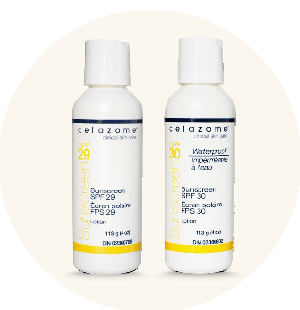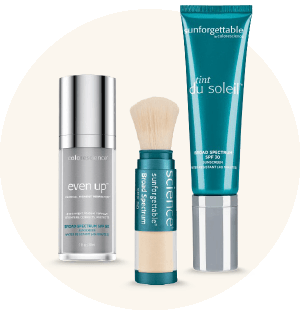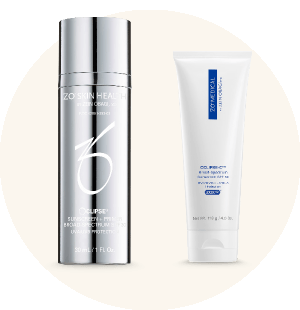Myth Busting Sunscreen
We expose some common myth about sunscreen with tips on how to prevent the damaging effects of sun exposure.
Myth #1 A base tan protects you
There is no such thing as a safe tan. A tan is literally your body’s response to being injured by UV exposure. In fact, a “base tan” provides the SPF equivalent of 4. By comparison, a white T-shirt gives you more coverage – about an SPF 7.
Myth #2 I have dark skin, so I don’t need to worry
Everybody, regardless of race, ethnic origins and skin type is subject to the damaging effects of exposure to the sun. Even those who tan easily and rarely burn should use sunscreen. Many people with more pigment in their skin will have lower skin cancer risk, but they’re not immune. Even if you have a dark complexion, you could have genes that make you more susceptible to skin cancer.
Myth #3 I need sun to get enough vitamin D
Using sunscreen does not block the body’s ability to make vitamin D. In fact, most people get enough sun exposure doing everyday outdoor activities, such as walking to the bus or across a parking lot. You need much less time in the sun to make adequate levels then you might think. After about 15 minutes, the system overloads and production stops. Being tan isn’t a good indicator of healthy vitamin D levels. You can get enough vitamin D from a mix of diet, supplements, and incidental sun exposure.
Myth #4 The SPF in my makeup is enough
It’s fine to have sunscreen in your makeup, but consider it an extra layer, not your main safeguard. You should wear at least an SPF of 30.
Myth #5 I’m allergic to all sunscreens
While many people don’t love the viscous texture or the irritation sunscreen can sometimes cause, being truly allergic is exceptionally rare. For this reason, we carry 10 different types of sunscreen and are dedicated to finding the perfect match for each client. If you have sensitive skin, stick to a physical sunscreen, which has titanium dioxide or zinc oxide to block rays, which will be less aggravating. Learn more about our sunscreens on the reverse.
Myth #6 Certain chemicals in some sunscreens make wearing them more dangerous
While this is a controversial area, there are no conclusive studies that demonstrate this. Combinations of chemicals (UVA-absorbing agents with low skin penetration) such as Avobenzone, and physical blockers, such as zinc oxide and titanium dioxide provide the greatest broad-spectrum protection. However, if you want to avoid chemical sunscreens there are great physical block options available.
Myth #7 The amount of sunscreen you use doesn’t matter, as long as you use it
Most people don’t use enough or re-apply every 2 hours, as recommended. At least one ounce, or the equivalent of a shot glass, is needed for most adults. It is best to apply 15–20 minutes before going outside to allow it time to be absorbed into the skin. Sunscreen should be reapplied every 2 hours.
Myth #8 Waterproof sunscreen provides “all day protection” and does not need to be reapplied
Waterproof sunscreens loose some of their effectiveness after 40 minutes in the water. No sunscreen really provides “all day protection”. All sunscreens should be reapplied every two hours – especially after swimming or excessive sweating.
Myth #9 Sunscreen is unnecessary on cloudy days and during non-peak tanning hours
80% of the sun’s UV rays can pass through clouds. UV rays can be reflected off sand, water and snow, so you can even sunburn in the shade. In fact, sand reflects 25% of the sun’s rays and snow reflects 80%. UV rays can penetrate the car windows as well. Not to mention, tanning at any hour of the day isn’t safe. UVB rays, which cause burning and some skin cancers, peak at mid-day. However UVA rays, which contribute to aging and some skin cancers – are constant all day long.
Fun Fact: Calgary is the sunniest Canadian city.
Myth #10 80% of sun damage occurs before age 18, so the injury is already done
It’s the same as smoking cigarettes – no matter how much damage you’ve done, it always good to stop. While it’s true that melanoma, the deadliest form of skin cancer, is more closely linked to childhood sunburns, it is cumulative sun exposure that’s associated with other skin cancers, not to mention wrinkles, thinning skin, dark spots, and broken capillary veins on the skin.
Sun Protection Tips
- Stay out of the mid-day sun
- Use an umbrella at the beach
- Wear sun-protective clothing and hats
- Use sunglasses that protect from both UVA and UVB rays
- Don’t forget about your lips – wear an SPF 30 lip balm.
- Completely avoid tanning beds!
We recommend these sunscreen products

- Celazome Sunscreen SPF 29
- Celazome Waterproof Sunscreen SPF 30

- Colorescience Sunforgettable tint du soleil SPF 30
- Colorescience Even Up Broad Spectrum SPF 50
- Colorescience Sunforgettable Loose Mineral Sunscreen SPF 50

- ZO Oclipse Sunscreen + Primer Broad Spectrum SPF 30
- ZO Oclipse-C Broad Spectrum Sunscreen SPF 50